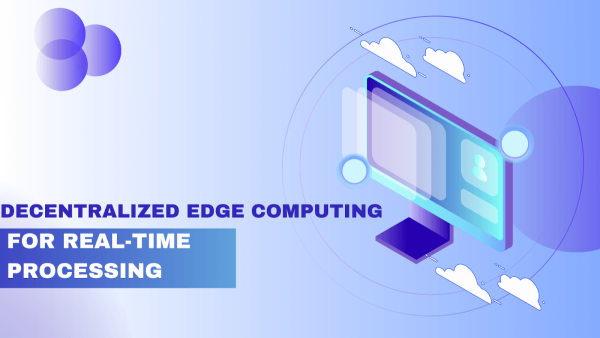
Decentralized Edge Computing
Decentralized edge computing enhances real-time data processing by distributing computational resources across localized nodes, reducing reliance on centralized cloud infrastructure. This approach by Ummer khan asif in study minimizes latency, bandwidth constraints, and security risks, making it ideal for industries like healthcare, smart cities, autonomous systems, and industrial automation. Integrating AI-driven resource allocation and blockchain-based trust mechanisms improves scalability, fault tolerance, and security. This paper proposes a framework combining AI for dynamic resource management and blockchain for data integrity, addressing key challenges in decentralized edge computing.
The Shift Toward Decentralized Processing
Traditional cloud computing struggles with real-time processing due to latency, bandwidth limitations, and security concerns. This is problematic for mission-critical applications in sectors like healthcare and autonomous systems, where immediate data processing is essential.
By processing data closer to its source, decentralized edge computing reduces network congestion and security risks. Unlike centralized systems, which are vulnerable to cyberattacks, decentralized networks enhance data protection by distributing processing tasks. Technologies such as peer-to-peer communication, AI, and blockchain further optimize resource management and ensure secure, transparent data transactions.
As noted by Ummer Khan Asif in journal, adopting decentralized networks significantly mitigates cyber threats and ensures efficient data distribution across edge nodes.
Why Decentralization Matters
The exponential growth of IoT devices demands efficient real-time processing. Traditional cloud models struggle with latency, making them unsuitable for applications requiring instant decision-making. Decentralized edge computing addresses this by processing data locally, improving responsiveness and optimizing resource utilization.
Industries like healthcare, smart cities, and autonomous systems benefit significantly. In autonomous vehicles, real-time sensor analysis ensures safe navigation, while healthcare applications rely on instant patient data processing. However, challenges such as security, resource coordination, and interoperability must be addressed. AI can enhance resource allocation, while blockchain ensures data integrity, making decentralized edge computing more efficient and reliable.
Research Insights
Our study adopts a mixed-methods approach to optimize decentralized edge computing using AI-driven resource allocation and blockchain-based trust mechanisms. It combines qualitative and quantitative methods to address latency, security, resource management, and interoperability challenges.
The AI & Blockchain Framework
Our proposed framework enhances decentralized edge computing by integrating AI for resource allocation and blockchain for security and trust.
Key Benefits of Decentralized Edge Computing
Decentralized processing reduces latency, enhances bandwidth efficiency, and improves fault tolerance, making it ideal for real-time applications like autonomous vehicles and healthcare.
AI & Blockchain Integration: AI optimizes resource management and energy consumption, while blockchain secures transactions and automates processes through smart contracts.
Real-World Applications:
Challenges & Limitations
Despite its advantages, decentralized edge computing still faces certain obstacles. Ummer khan asif in journal highlight key issues such as complex resource management, security risks, and interoperability concerns:
Future Outlook
Decentralized edge computing, combined with AI and blockchain, offers a scalable, secure, and efficient solution for real-time processing. While challenges remain, this integration enhances resource management, security, and interoperability, making it a promising technology for mission-critical applications. Organizations must continue refining these technologies to ensure seamless adoption and optimization in real-world scenarios.